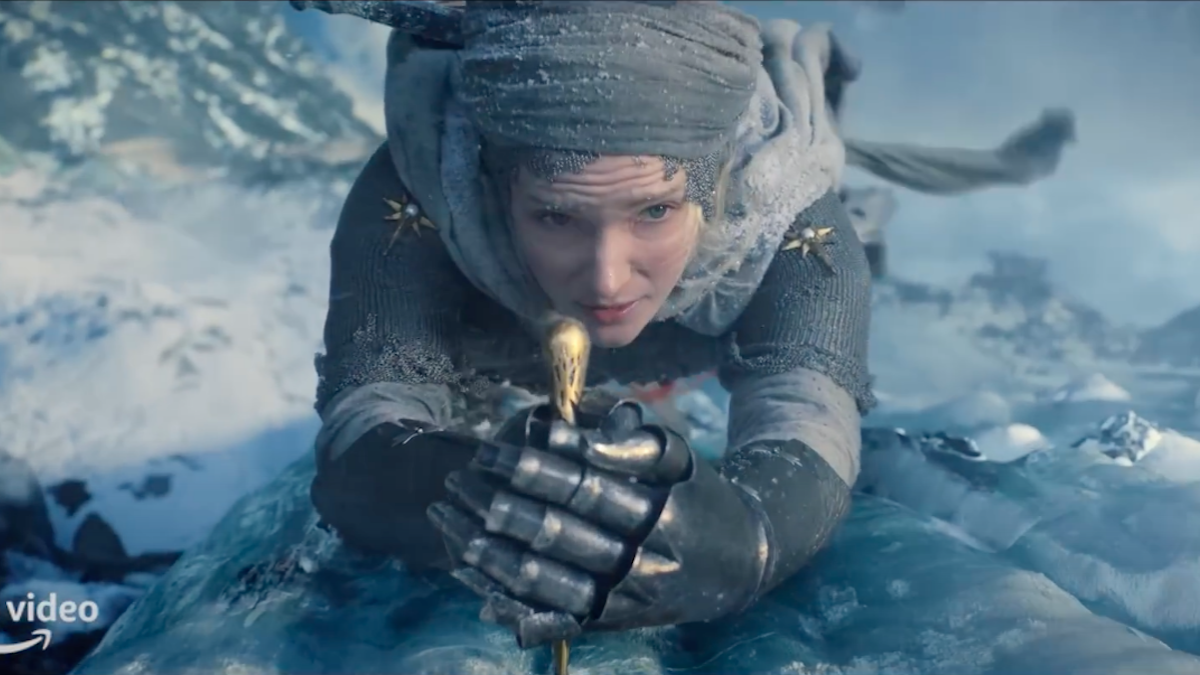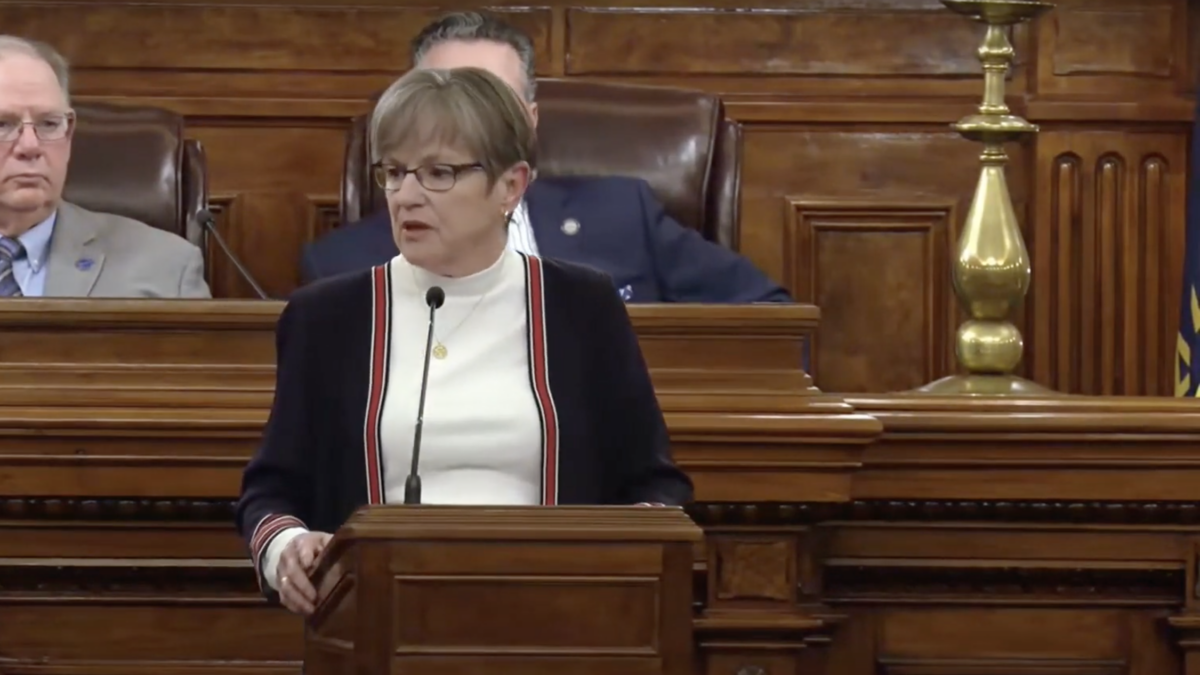There’s a lot to dislike in Amazon’s billion-dollar adaptation of J.R.R. Tolkien’s work, primarily the utter abandonment of Tolkien’s moral and religious imagination, as Nathanael Blake noted in his excellent analysis in these pages earlier this week.
But “Lord of the Rings: Rings of Power” doesn’t just make a mockery of the deeper meaning behind Tolkien’s legendarium, it also butchers the lore itself, unapologetically and needlessly deviating from its source material in ways that render the epic events of Middle Earth’s Second Age by turns incomprehensible and ridiculous.
With that in mind, here are the three most egregious instances where Amazon’s showrunners J.D. Payne and Patrick McKay decided to ignore, truncate, or completely change important elements of one of the greatest works of literature in the English language — either because they failed to understand the lore to begin with, or because they hate Tolkien’s deeply Roman Catholic mythology so much they deliberately tried to destroy it.
Gil-galad Had No Power to ‘Send’ Galadriel (or Anyone Else) to Valinor
After Galadriel returns from what appears to be an unsuccessful, centuries-long mission to hunt down Sauron (a mission that implausibly ends in mutiny), the high-king of the elves, Gil-galad, proclaims the war against Morgoth’s forces to be over. He then grants Galadriel and her company the honor of returning to Valinor, the realm of the Valar in Aman across the Sundering Seas. Galadriel clearly doesn’t want to go and at the last moment jumps ship and swims back toward Middle Earth. Eventually, she’s rescued by a group of shipwrecked human survivors on a raft, which is where we leave her at the end of episode two.
There are a lot of problems here, but let’s start with the idea that Gil-galad, as high-king of the Noldor, would have had any authority to “send” Galadriel or anyone else back to Valinor, much less punish Galadriel for not following his orders.
The showrunners might think they can get away with such a silly plot device because they basically ignore the existence of the Valar, which are the spirits of Arda (the world) born from the thought of Ilúvatar (God) that reside in the undying lands of Valinor. But anyone who has read the source material from Tolkien would know that Gil-galad could no more grant passage to Valinor than he could travel there himself at will.
Why? Because Galadriel and the Noldor were exiled from Valinor during the First Age when they rebelled against the Valar and left for Middle Earth in pursuit of Morgoth. At the end of the First Age, after Morgoth is defeated, the Valar pardon the Noldor and invite them to return to Aman. But some, including Galadriel and Celebrimbor, remained in Middle Earth. In one version of Tolkien’s lore, Galadriel is excluded from the pardon of the Valar and banned from Valinor. In another version, she rejects the pardon and chooses to remain in Middle Earth with Celeborn, whom she has long since married.
The point is, Gil-galad doesn’t decide who goes to Valinor and who doesn’t, the Valar do. And he certainly wouldn’t offer passage to Valinor as a reward for military service, any more than elves would have applauded at the announcement, as they absurdly do in the first episode of “Rings of Power.”
(Another point about Galadriel: She wasn’t some mid-level military officer Gil-galad could order around or punish, much less the leader of some rag-tag elven scouting party, or even “commander of the northern armies” as the show portrays her. She was an elven queen, born in Valinor, who ruled vast kingdoms in Middle Earth. As high-king of the Noldor, Gil-galad might have technically outranked her, but she was considerably older than he was, and by birth would have been something like his great-aunt.)
Sorry, but Elves Didn’t Loath or Fear Human-Elf Couplings
In one of the several boring and tedious subplots of “Rings of Power,” Arondir, an elven sentinel, is not-so-secretly in love with a healer woman from the southlands named Bronwyn. At one point Arondir is chastised by his companion Medhor, who says human-elf couplings have only twice “even been attempted,” and “on each occasion ended in tragedy, ended in death!”
The two human-elf couplings he’s referring to are of course Beren and Lúthien, and Tuor and Idril. Lúthien eventually chose to renounce her elven immortality to marry Beren, a mortal man. Although the loss of Lúthien might be considered a “tragedy” by some elves, the unions of Beren-Lúthien and Tuor-Idril led to the final defeat of Morgoth and can hardly be considered a cautionary tale or to have “ended in tragedy.”
In the case of Tuor, a man, and Idril, an elven princess, it was their half-elven son Eärendil who sailed to Valinor in the First Age to seek the aid of the Valar against Morgoth. He was married to Elwing, daughter of Dior, the son of Beren and Lúthien. Their sons were Elros and Elrond.
After Eärendil’s voyage to Valinor (he was the first mortal man ever to set foot there), he fought and killed a great dragon in the battle that finally brought Morgoth down. Afterward, the Valar agreed that because Eärendil and Elwing were both descended from a union of elves and men, and because of the great and perilous journey Eärendil had undertaken for the sake of both elves and men, it would be granted to them and their sons the freedom to choose the race to which they would henceforth belong. Elros chose men, Elrond chose elves. Centuries later, Elrond’s daughter Arwen would forsake her elven immortality to be with Aragorn, a descendent of Elros, thus marking the third human-elf coupling.
As anyone acquainted with this lore knows, it was through these human-elf couplings that some of Middle Earth’s greatest figures emerged and some of its greatest deeds accomplished. Only someone wholly unfamiliar with or hostile to all this would portray human-elf couplings as dangerous or somehow taboo. But that’s exactly what Payne and McKay did in “Rings of Power.”
Hobbits (Er, Harfoots) Don’t Appear Until Thousands of Years After the Second Age
Because the show’s creators don’t give a damn about fidelity to Tolkien’s mythology, and perhaps because they thought “Rings of Power” needed some comic relief (the cartoonish rock-breaking contest between Elrond and Durin wasn’t enough, apparently), they decided to throw some hobbits — excuse me, harfoots — into the mix.
Never mind that hobbits don’t appear in Middle Earth until a thousand years into the Third Age, long after the events portrayed in “Rings of Power.” The show tries to get around this by positing that harfoots are ancestors of hobbits, but they’re not. Harfoots are one of three breeds of hobbits, along with stoors and fallowhides. Anyone who has read the prologue to “The Lord of the Rings” knows this. It’s not an oversight on the show’s part, it’s an intentional distortion of Tolkien’s lore.
Chronological problems aside, these hobbits/harfoots feel… off. Not necessarily because so many of the actors and actresses portraying them are black or multiracial — although that also doesn’t make sense, given that Tolkien was depicting a prehistoric mythology of northern Europe and Britain, which was more or less racially homogenous. It’s more because they seem less like the hobbits of Tolkien’s creation and more like forest-dwelling gnomes, or a primitive nomadic tribe, or the elves from Ridley Scott’s 1985 fantasy film “Legend.” Their dress and manner and village all feel totally disconnected from Middle Earth, and absolutely nothing like the pre-industrial Englishmen on which they were based.
Indeed, you get the sense that one of the reasons the showrunners wanted hobbits was so they could showcase multiracial hobbits along with multiracial elves and dwarves, perhaps because they thought it would be edgy and progressive. (Ooh, look! See how Arondir’s commander is racist against men? See how the townsfolk are racist against Arondir? But are they racist against him because he’s black or because he’s an elf? So deep.)
And maybe that would be fine — a bit of artistic license in a sprawling fantasy series — if showrunners Payne and McKay hadn’t also mangled, changed, or ignored so much else about the lore they were supposedly adapting. In the context of all that, however, their nonsensical decision to make Middle Earth look even more multiracial than modern Britain comes off as self-conscious virtue-signaling that distracts from the story and adds nothing of substance.
Amazon Has Quashed All Future Film Adaptations of Tolkien
The items above aren’t all that’s wrong with the lore in “Rings of Power.” There’s the bizarre suggestion that elves didn’t have a word for “death” in Galadriel’s youth. (Elves are immortal but they can die from injury or extreme privation, and they can even give up their spirit, as Fëanor’s mother did, and they certainly saw animals die in the First Age.) There’s the weird Sauron symbol that crops up in strange places, the absurd depiction of Elrond as a simpering speechwriter for Gil-galad, somehow not invited to the “council” that only “elven lords” are allowed to attend, which is just flat wrong — he’s the son of Eärendil, he’s an elven lord! And let’s not even speculate about the strange comet-man who, if he turns out to be the first Istari (or wizard) would also be thousands of years too early, since the wizards didn’t come to Middle Earth until the Third Age.
But the worst part about “Rings of Power” isn’t that it has already failed miserably on its own terms (as of this writing, the show has a dismal 39 percent audience rating on Rotten Tomatoes). It was obvious enough it would fail when the first teaser trailer came out.
The worst part is that no one will ever attempt another large-scale adaptation of Tolkien after Amazon has spent its billion and had its say. We could have had a show that’s actually about the compelling characters and gripping tales of the Second Age as Tolkien created them. We could have had a standalone miniseries about the rise and fall of Eregion, or the saga of Tar-Aldarion, the great Númenórean king and mariner who sailed to Middle Earth and established contact with Gil-galad and the elves at Lindon. There were so many possibilities, but none of them will ever be made now. Payne and McKay and the geniuses at Amazon didn’t just ruin one show, they killed all future big-budget adaptations of Tolkien.
Maybe that’s for the best. Maybe we’re no longer the kind of people or society that can faithfully adapt Tolkien because, having lost our own moral imagination and sacramental understanding of creation, we can no longer comprehend the meaning of Middle Earth. If that’s the case, it would be best to leave Tolkien’s lore on the page where it began, protected from meddling and butchering by those who despise the man and his epic work, and would unmake it if they could.









